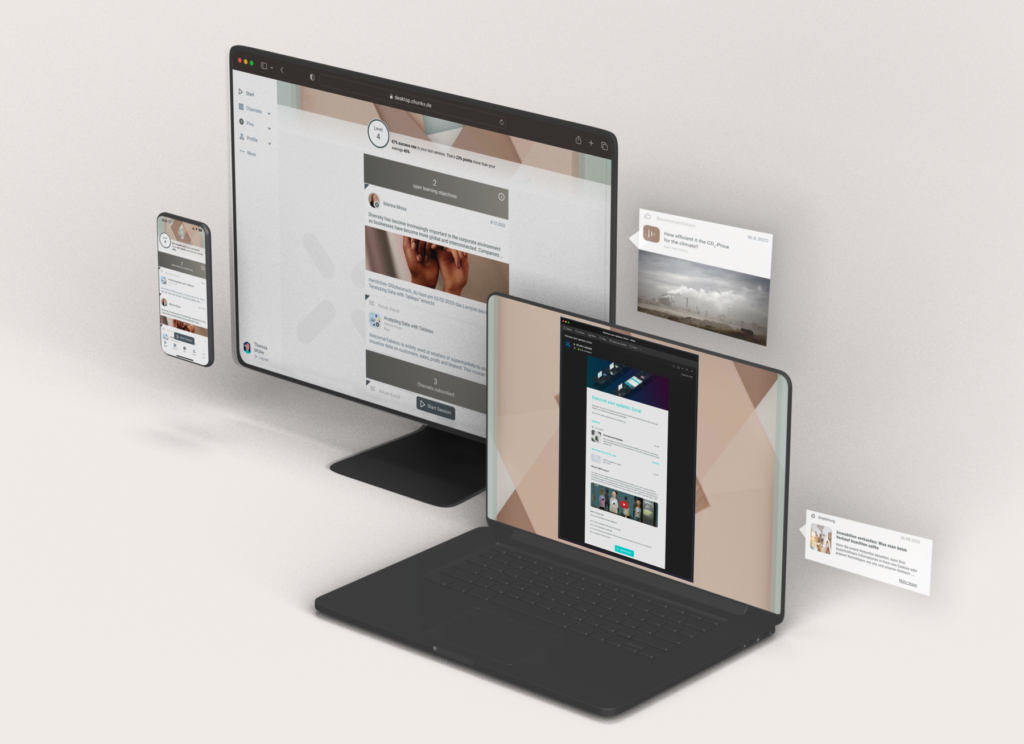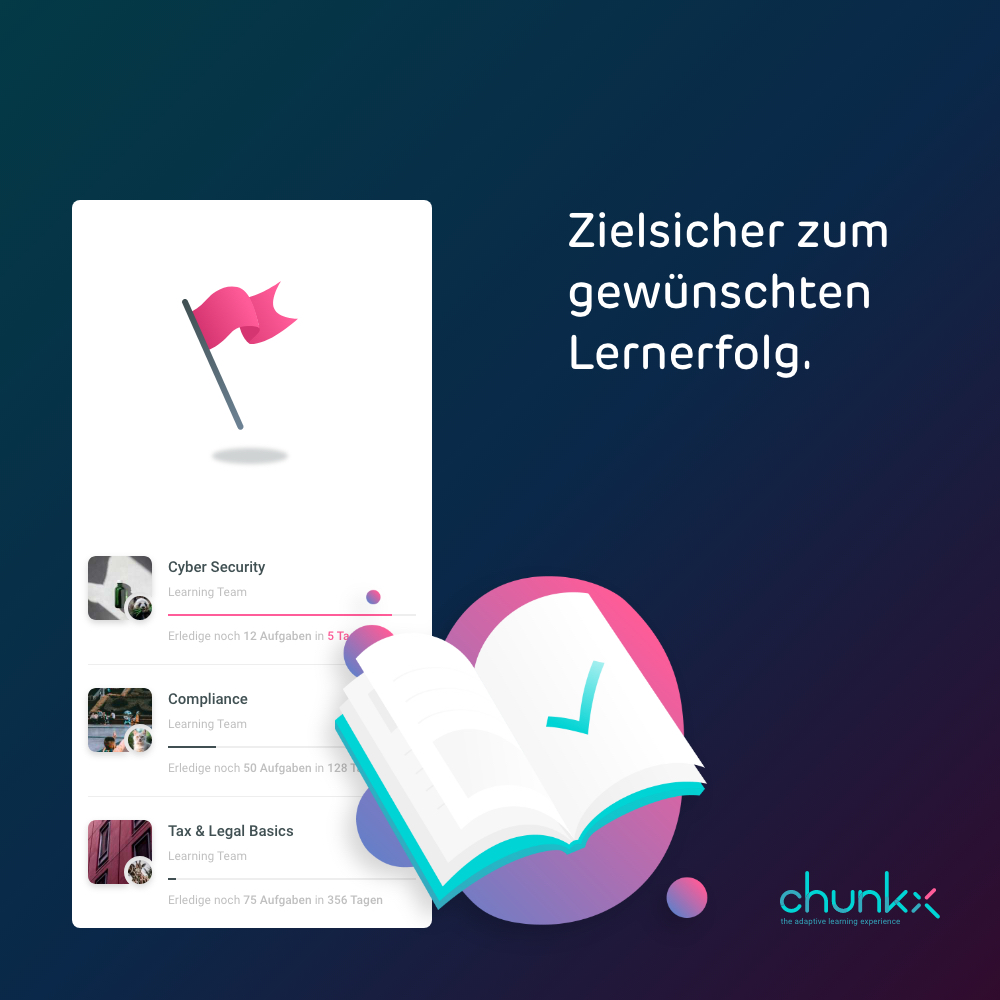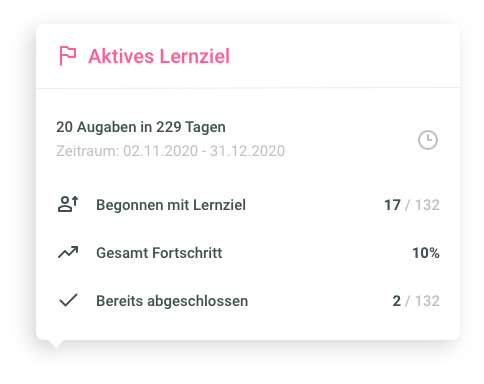Einfache Internationalisierung durch automatische Übersetzung von Inhalten
Unsere Kunden beschäftigen Mitarbeitende aus und in verschiedensten Ländern. Daher ist es wichtig, dass Lerninhalte in chunkx schnell und ohne hohen Aufwand in den entsprechenden Sprachen bereitgestellt werden können. Um diesen Prozess zu vereinfachen, können Kunden im chunkx creator nun ganze Kanäle automatisch per DeepL Schnittstelle übersetzen lassen.
So einfach funktionieren Übersetzungen in chunkx
Jeder Kanal kann in aktuell ca. 30 Sprachen übersetzt werden. Eine Übersetzung dauert dabei ca. 10-30 Sekunden, je nach Umfang der Inhalte.

Anschließend taucht der Kanal als Übersetzung unterhalb des Hauptkanals auf und kann geprüft, weiter bearbeitet und online gestellt werden.

Internationalisierung und Regionalisierung
Kunden haben unterschiedliche Anforderungen an Übersetzungen, die sich je nach Thema und Zielgruppe unterscheiden können. Häufig reicht eine 1:1 Übersetzung aus, man spricht dann von Internationalisierung. Manchmal müssen die Lerninhalte jedoch an die regionalen Anforderungen angepasst werden. In diesem Fall spricht man von Regionalisierung.
In chunkx ist beides ganz einfach möglich. Ein übersetzter Kanal kann weiterbearbeitet werden, sodass sich zentrale Begriffe, Produktnamen oder ggf. ganze Absätze gemäß der regionalen Anforderungen geändert werden können. Es lassen sich auch Inhalte hinzufügen oder löschen. Die Autoren behalten dabei die Kontrolle, ob es sich nach den Änderungen immer noch um eine „Übersetzung“ handeln soll oder ob der Kanal sich soweit vom Original entfernt hat, dass er zu einem regulären Kanal umgewandelt werden soll.
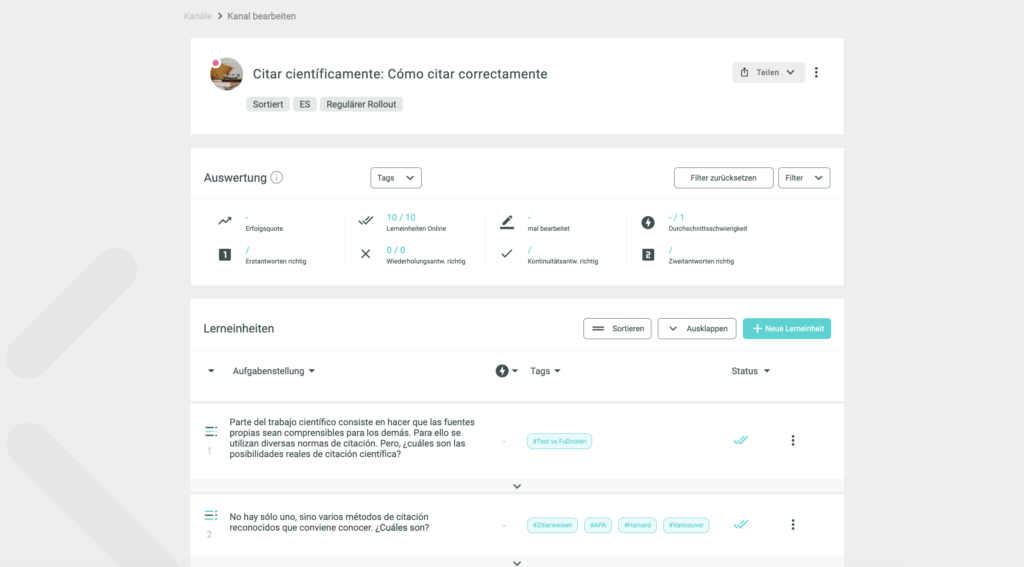
Optimierte Auswahl für Lernende
In chunkx können Lernende nicht nur ihre Hauptsprache einstellen, sondern weitere Sprachen angeben, die sie sprechen. Gem. dieser Angaben werden Kanäle in unserer Micro-Learning-App für die Lernenden optimiert ausgewählt. Und sollte es doch mal nicht die richtige Sprache sein, kann die Auswahl einfach geändert werden.
Warum DeepL?
Nochmal zum Technischen: Wir haben uns unterschiedliche Möglichkeiten, Inhalte zu übersetzen, angeschaut. Von Google Translate über DeepL bis hin zu Übersetzungen mit OpenAI GPT-Modellen. DeepL hat uns einerseits bzgl. der Qualität und andererseits als Deutsches Unternehmen bzgl. Datenschutz überzeugt. Übersetzungen mit Sprachmodellen wie GPT-4 von OpenAI fanden wir auch sehr spannend, da hier Kontexte besser berücksichtigt werden können, jedoch war die Qualität noch nicht verlässlich genug. Wir werden die Entwicklungen hier aber sehr genau im Blick behalten!
Wann startest du mit chunkx?
Mit chunkx haben wir die Lösung geschaffen, um eure einmaligen Lernaktivitäten in kontinuierliche Lernerfahrungen zu verwandeln. Sprachbarrieren und regionalen Anforderungen begegnen wir dabei mit unserer automatisierten Übersetzung und der Möglichkeit, die einzelnen Übersetzungen anzupassen. Sprich mit uns über die Lernkultur in eurem Unternehmen, eure Herausforderungen und wie wir euch mit chunkx dabei unterstützen können.
